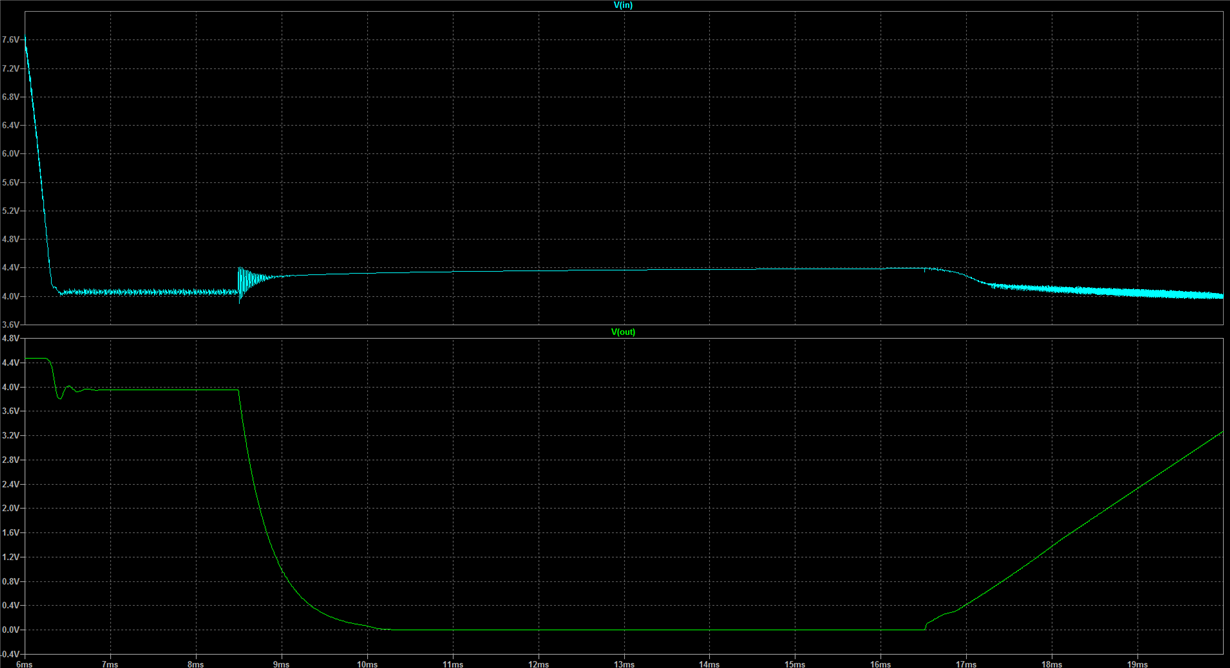Hi community,
is there any information about the behavior of the LM46002-Q1 if the input voltage falls below the desired output voltage. This happens for example during cranking of an engine. In this case the input would be ca. 3.8 V and the output is set to 4.5 V. The enable pin is tied to the input voltage. The output current is approximately 1.5 A.
My LTSpice Simulation shows that the output voltage decreases to zero and starts ramping up the voltage again after ca. 8 ms. Then this sequence repeats....



